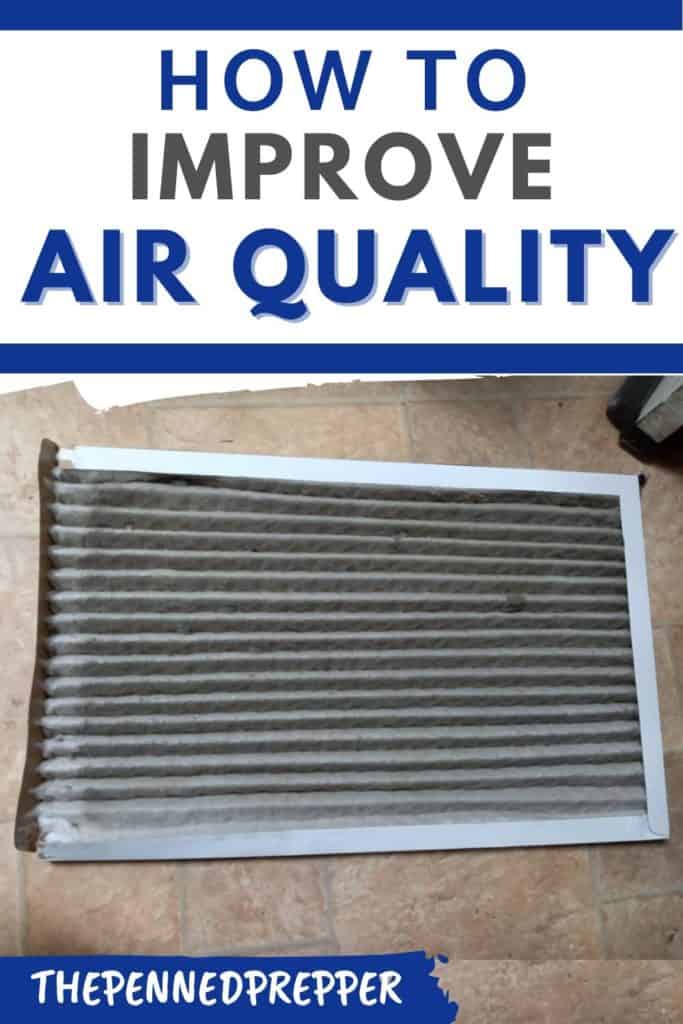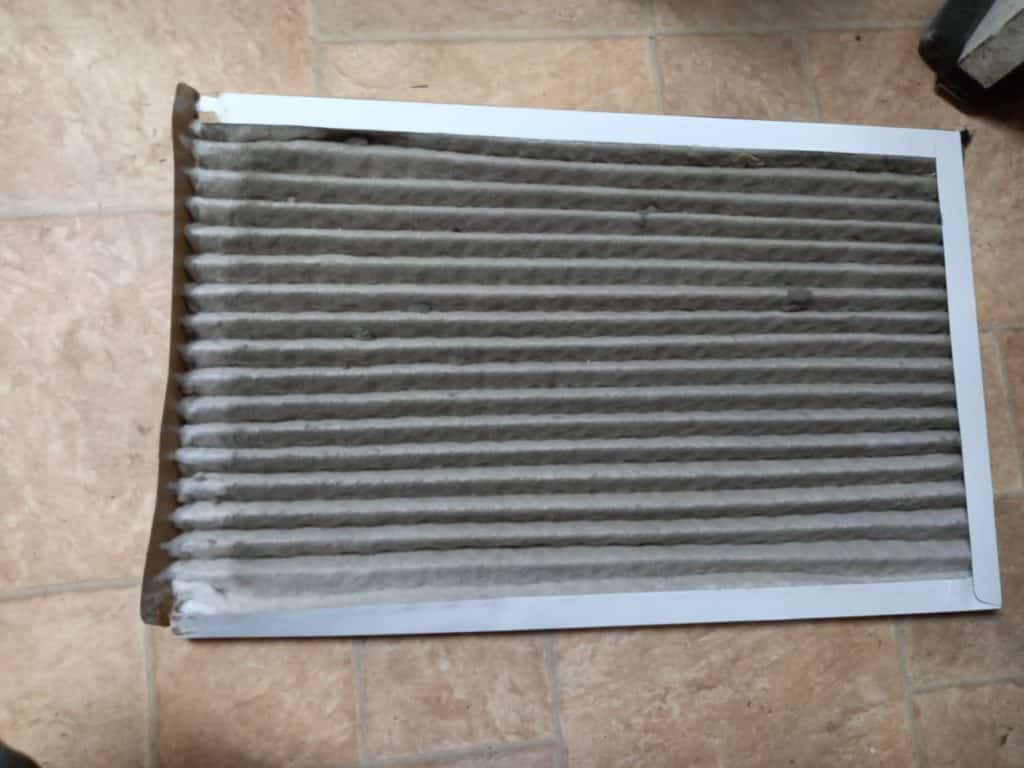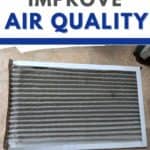How To Improve Air Quality
Prepping and Improving Your Air Quality – So You Can Breathe Deep
As I previously mentioned, I am asthmatic, so knowing how to improve air quality is very important to me.
For whatever reason, I have managed to live in places that have serious air quality and air pollution issues. Everything from having pollen be so thick that it lays in a thick layer on your car after just a few hours of being parked (it looks like your car has been in a yellow tinted dust storm), to having severe mold, to living where I do now, with occasional wildfires that are so bad that they tint the air color- there are days I seriously consider just moving to the high desert, where all I have to deal with is dust storms.
Between the poor air quality and my asthma, I have an interest in taking care of a need on one of the lowest levels of the human needs pyramid– Air.
No, you don’t actually have to keep enough SCUBA tanks on hand to breathe out of them for a week. If you do have enough SCUBA tanks, or the money to buy them, you may want to start with this first anyhow. Also, drop me a line. I would love to learn how to dive, and would like some pointers on how to pick out a good instructor and or a school.
Anyhow.
The way I break down air quality improvements comes in two categories: inside and outside the home.

As an Amazon Associate I earn from qualifying purchases. This page may contain affiliate links from various companies, which means if you click on a link and make a purchase, I might make a little bit of money, at no extra cost to you. For more information please visit our disclosure policy
Improving Outdoor Air Quality
Outside the home is relatively simple, if it can make you look socially odd. Correctly wearing a filtration mask of some sort will generally improve air quality.
Personal masks are fairly popular at the time of this writing, so you may have difficulty getting ahold of one.
Protect Against Outdoor Allergens with Personal Masks
Bandanas and Shemaghs
The lowest of the low is a simple bandana, the Keffiyeh (kef-ee-ah), or the shemagh (she-maw-gh). These are simple pieces of cloth that can be wrapped in front of your mouth and nose, and are generally only effective against relatively large particulates, such as sand.
These are excellent for dust storms and similar, but may be lacking for finer particulates, such as drywall dust or other things such as moisture from your breath.
Paper and Cloth Masks
On the lower (but still effective) end of the scale, there are a lot of options- paper, cloth, neoprene, and so on. These will not necessarily save you from threats the military would expect, such as NBC (Nuclear, Biological, Chemical) attacks, but they hold potential to reduce your allergen problems by quite a bit, and if you are sick, may help to prevent others from catching it.
I know of one specific company that severe allergy sufferers have been using for a number of years- Vogmask. I don’t use them personally, but I know a number of people who can vouch for how effective they are, and how well constructed they are.

Vogmask style masks are a cotton and microfiber mask with a single filter element and (important for a number of people I know) no latex.
Paper or cloth masks will not form a complete seal on your face, and while they are much better than nothing, will not be as effective for those with more severe allergies or people expecting to be in an extremely dusty environment with very poor outdoor air quality. They cannot protect against certain kinds of toxic environments, and will not do as good a job at protecting against strong odors as other kinds of masks may be.
Rubber or Silicone Masks
Going up the scale, you have half or partial face respirators. These are a rubber or silicone mask with separate filter elements. They tend to have a somewhat more complete strap system in order to hold them onto your face, and the filter or filters are usually replaceable. The primary disadvantage of this style is that your breathing is more restricted, because the filter elements are so much more thorough. They tend to look a bit like a gas mask, and in fact many of them have filters that are capable of filtering all sorts of things, such as severely toxic fumes as well as other major air pollutants.
One advantage of a properly fitted respirator with a fresh cartridge is that it should block out all outside smells, meaning that if something really nasty happens (like a sewage back up in your basement) you have additional protection.
I personally own and use a 7000 series respirator from 3M, with two separate replaceable filters. The particular model that I use is sold in hardware stores, and replacement filters are fairly easy to obtain normally. Either the 6000 series or the 7000 series use the same filters, and both are fairly common types.
To be clear, there are many good brands of mask- I specifically chose to use a common brand that I have experience with as an example. I have found less expensive products, but the difference in quality of fit, comfort, and durability of product has been notable. I would invite you to share your opinion in the comments.
I prefer the style that I use because when I was doing construction for a living it was a more comfortable design to wear for extended periods, and there are a few other features that I am a fan of, such as the double filters, which restricts airflow less and allows me to go longer between filter changes.
There are a number of filter options for respirators- all the way from particulates (tiny bits of dust), to cartridges that are designed to protect your lungs against acidic gasses and organic vapors (think of that toilet overflow, or that strong smell from paint as it dries).
There are many other options, but for most people, those two filter options are more than enough.
Full-Face Respirators and Masks
At the top of the scale, there are full-face respirators and masks.
If you expect to deal with toxic gasses that would irritate your skin or your eyes, these are the best option for you. Regularly dealing with fuel spills, living near a cattle ranch, or just having relatives that like to grow hot peppers can make these a good idea to have on hand. After all, you cannot be in control of your outdoor air pollution, but you can be in control of what kind of air actually reaches your lungs.
The full face mask is more or less a gas mask- in point of fact, there are full face masks that are made by the same manufacturers that make NATO nations gas masks, where the primary difference is the connector type used for the filter itself- 3M for example, uses a bayonet-style connector for its commercial masks, and a screw-on connector for its military-style masks.

This is a 6000 series half face mask with an additional face shield, which is what makes it a full mask. Again, there are a number of options out there, but a full-face mask tends to be much more expensive than a half-face mask.
PAPR for Top-Tier Air Filtration
If you really want the top tier of air filtration, you can get something like the PAPR system– a powered blower and filter that are connected to the full face mask, which means that there is zero airflow restriction, and a potential to have a larger capacity filter connected to it on a belt unit.

This style does require recharging a battery to power the blower, and is generally much larger and more unwieldy, but if you ever have to spend extended periods with a mask on (working in certain kinds of high contaminant environments, or a lot of HAZMAT) this style is generally the most comfortable and perfect for those with severe health problems related to breathing or who are in particularly horrible areas of poor air quality.
PAPR style systems are available from several manufacturers, but they are all much more expensive than the comparable unpowered mask. Again, the only one that I have personal experience with is manufactured by 3M, but there are several other options that work well from what I can tell.
Improving Indoor Air Quality
Inside the home does not have as many categories of options, but can be just as complex.
Air Filtration Through HVAC System Filters
If you have access to your home furnace/AC/hvac system, there are a number of options for air filtration. You will have to find the measurement for your filter- it is usually printed on the side of the filter- but replacing it is fairly easy, has to be done regularly anyways, and can be very useful when you are trying to prevent or help with air quality issues.
A standard low-end air filter is not good at filtering small particulates- it will keep out large particles and chunks of things, but it will do a very poor job at taking care of things like smoke particles or dust. The biggest advantage is that they are very cheap, and if you operate your furnace or AC without one, it can destroy your equipment.

On the other hand, it may be completely missing huge amounts of stuff- this is a picture of my air filter after only a bit over two weeks- I pulled up the side of the cardboard from the filter element so that you can see how dirty it got in the last two weeks. I talked about dealing with smoke from wildfires previously- if I had not had a good filter, I would have been breathing that in, and probably dealing with far worse breathing problems and indoor allergens.
You can extend the lifespan of most filters by putting on a pre-filter that catches the largest particles and bits of fluff that clog up your filter. My furnace filter will not fit a pre-filter, but most peoples’ will, and they are fairly cheap.
HEPA standard filters take out just about everything- it was designed originally to filter out radioactive particles, but it is commonly used now by all sorts of people. Unfortunately, there are very few whole-house HEPA filters, because they require special high power exhaust fans on the furnace or other heating system.
While it is not as good as a HEPA filter, anything MERV (a rating system for filters) 11 or greater (like this) is a good, option.
On a useful note (especially if you have pets): there are odor reduction filters that can greatly reduce smells from things like 3D printing, burning incense, or even pets like cats or ferrets. Pets are a major cause of indoor allergens and poor indoor air quality, so you’ll want to combat that buildup. This is a good name brand, but you can probably get away with this one just fine. Either way, I have smelled the difference between a house with five cats and a ferret before they got a filter like that, and after, and it was immense.
Air Purifiers For Indoor Air Pollutants
For those of you who live in apartments or condos who may not have access to your filter, there are other options available. While houseplants (such as spider plants) are a good option for many people, a freestanding air filter is the most common option, and you can purchase HEPA grade filters for many of them. Alternately, your house may have been built as a government work project, and have massive dust issues that are only partially mitigated by a whole house filter.
Freestanding air filters are not as nice as a whole house filter, but much better than nothing- I have been known to use one as a supplementary filter in my bedroom at night during allergy season when there is no better option.
Freestanding HEPA filters are also useful for people with a lot of computer equipment- dust can be an issue over time, and having something to take the dust out of the air in a server room can reduce maintenance in the long term.
If you get a freestanding air purifier to protect against indoor air pollution (dust mites, pet dander, etc), I recommend something that uses a common filter size- I use this style when I need to, since I have found inexpensive quality aftermarket filters that are the same style, which means that I can keep a stock on hand inexpensively.
In addition, the filter style that I use has a carbon pre-filter to extend filter life and remove smells from the air.
And if you insist, you can always wear a SCUBA tank, to make sure you have good air with you. Good luck with that.
Anyway, hopefully this has been useful for you- prepping and improving both outdoor and indoor air quality can be difficult if you are jumping in headfirst, and I hope this broke it down for you.
Good luck- go learn something.

